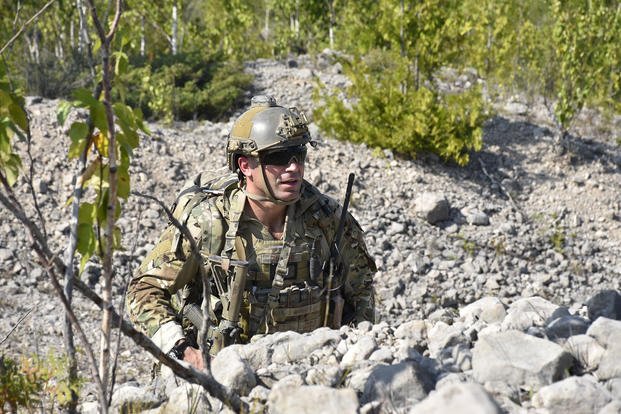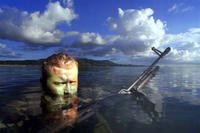Just about anything can happen during a mission, and standard exfiltration isn't always an option. If an operation has gone south, Air Force pararescuemen are the specialists you'll want to call when recovery and medical treatment are needed immediately. Of the 22 enlisted Air Force Cross recipients, 12 are PJs. With a track record of excellence and selflessness, they certainly live up to their creed -- "It is my duty as a Pararescueman to save lives and to aid the injured. I will be prepared at all times to perform my assigned duties quickly and efficiently, placing these duties before personal desires and comforts. These things I do, that others may live."
Training
The following information comes from Military.com contributor Stew Smith, a former Navy SEAL. For more information on PJ Training, check out his article about the whole process.
Once in the PJ Candidate Course, you will be challenged physically for 10 weeks in Joint Base San Antonio-Lackland, Texas. The first phase is known as team training and is eight weeks long. It consists of extensive physical training with swimming, running, weight training, calisthenics and obstacle courses. Educational training such as medical and diving terminology, CPR, weapons qualifications and dive physics are also part of the candidate course.
Here are the specific minimums to becoming a PJ and combat control tech, but the numbers in parentheses are recommended scores from spec ops trainers:
-- 2 x 25-meter sub-surface swim (no time limit)
-- 500m swim 10:07 or less (sub 9 minutes)
-- 30-minute rest
-- 1.5-mile run 9:47 or less (sub 9 minutes)
-- 10-minute rest
-- 10 pull-ups min (20+)
-- 2-minute rest
-- 58 sit-ups min (100+)
-- 2-minute rest
-- 54 push-ups min (100+)
Iron Man Standards:
-- 2 x 25m sub surface
-- 500m swim 9:30
-- 1.5-mile run 9:30
-- 13 pull-ups
-- 65 sit-ups
-- 65 push-ups
History
The history of pararescuemen goes back to before their official inception. The need for medical services to be supplied by aerial vehicles was predicted as early as 1922, but the idea wasn't put into conventional practice until World War II. During the war, disparate units were formed to fill this role, and while their equipment and training varied, each unit operated under the assumption that there were survivors in a crash until proven otherwise.
After the war, the Army Air Force created the Air Rescue Service in 1946. 1947 saw the official inclusion of pararescue jumpers when Dr. (Capt.) Pope B. "Doc" Holiday parachuted into Nicaragua to assist a crewmember who had evacuated a crippled B-17. Pararescue jumpers subsequently have served in Korea, Vietnam and engagements around the world, including the Global War on Terrorism.
Want to Know More About the Military?
Be sure to get the latest news about the U.S. military, as well as critical info about how to join and all the benefits of service. Subscribe to Military.com and receive customized updates delivered straight to your inbox.











